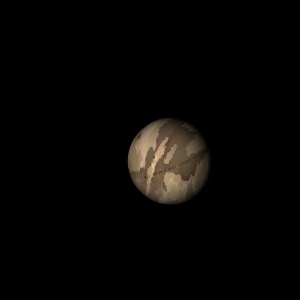|
|
Space Astro
|
Info for exoplanet "Cecweng Kwan"
| Scientific (actual) data |
|---|
| Name | Kepler-1578 b |
| Planet status | Confirmed |
| Radius | 0.093 |
| Orbital period | 1.45089 |
| Discovered | 2016 |
| Updated | 2021-02-05 |
| Tconj | 2454970 |
| Publication | Announced on a website |
| Detection type | Primary Transit |
| Alternate names | 2MASS J19131248+4746319 b, K04261.01, KIC 10526887 b, KOI-4261 b, KOI-4261.01, WISE J191312.49+474632.1 b |
| Star name | Kepler-1578 |
| Right ascension | 288.3° |
| Declination | 47.78° |
| Mag j | 14.157 |
| Mag h | 13.784 |
| Mag k | 13.655 |
| Star distance | 1016 |
| Star metallicity | -0.13 |
| Star mass | 0.9 |
| Star radius | 0.86 |
| Star age | 4.27 |
| Star temperature | 5545 |
| Star alternate names | 2MASS J19131248+4746319, KIC 10526887, KOI-4261, WISE J191312.49+474632.1 |
| Wikipedia article | Kepler-1578 b |
Back
| |
| Fictional info (?) |
|---|
| Suggested name | Cecweng Kwan |
| Planet type | Cold planet |
| Because of its rapid rotation, the planet's shape is that of an oblate spheroid (it has a slight but noticeable bulge around the equator).
Its north and south poles, therefore, lie where most other planets have their equators. |
| Atmosphere | Ammonia | 67% |
| 2H2O | 19% |
| Ozone | 8.5% |
| Formaldehyde | 4.2% |
| Atmospheric pressure | 21 bar |
 |
| No known satellites |
| Google search for Cecweng kwan |
|
Website by Joachim Michaelis
|
|
|
|